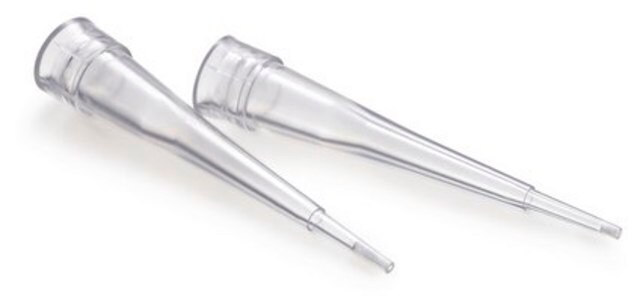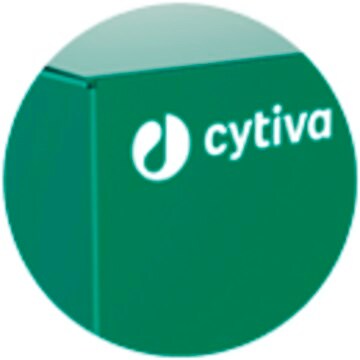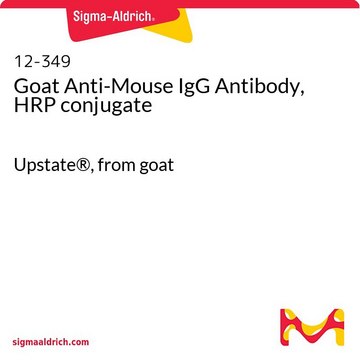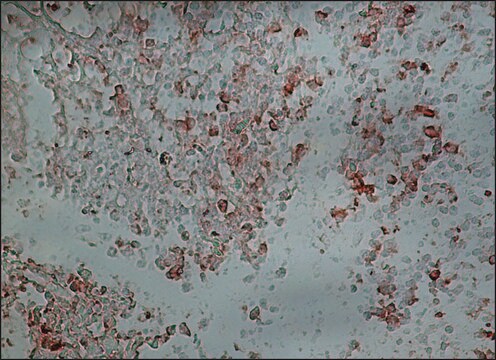A5906
Anti-Mouse IgG (whole molecule)–Peroxidase antibody produced in sheep
affinity isolated antibody, buffered aqueous solution
Synonym(s):
SAM
Sign Into View Organizational & Contract Pricing
All Photos(1)
About This Item
Recommended Products
biological source
sheep
Quality Level
conjugate
peroxidase conjugate
antibody form
affinity isolated antibody
antibody product type
secondary antibodies
clone
polyclonal
form
buffered aqueous solution
technique(s)
direct ELISA: 1:10,000
shipped in
dry ice
storage temp.
−20°C
target post-translational modification
unmodified
Looking for similar products? Visit Product Comparison Guide
General description
Immunoglobulin G (IgG) is a glycoprotein antibody that regulates immune responses such as phagocytosis and is also involved in the development of autoimmune diseases . Mouse IgGs have four distinct isotypes, namely, IgG1, IgG2a, IgG2b, and IgG3. IgG1 regulates complement fixation in mice . Anti-Mouse IgG (whole molecule)-Peroxidase antibody is specific for mouse IgG.
Mouse IgG is a plasma B cell derived antibody isotype defined by its heavy chain. IgG is the most abundant antibody isotype found in mouse serum. IgG crosses the placental barrier, is a complement activator and binds to the Fc-receptors on phagocytic cells. The level of IgG may vary with the status of disease or infection.
Horseradish Peroxidase (HRP) is an enzyme that catalyzes the conversion of chromogenic substrates such as o-phenylenediamine (OPD), 4-chloro-1-naphthol 3,3′,5,5′-tetramethylbenzidine (TMB), 3,3′-Diaminobenzidine (DAB) or 2,2′-azino-bis(3-ethylbenzothiazoline-6-sulphonic acid) (ABTS); chemiluminescent substrates such as CPS-3 (enhanced luminal) and fluorogenic substrates such as Ampliflu™ Red into detectable chromophores, light-emitters or fluorescers, respectively.
Horseradish Peroxidase (HRP) is an enzyme that catalyzes the conversion of chromogenic substrates such as o-phenylenediamine (OPD), 4-chloro-1-naphthol 3,3′,5,5′-tetramethylbenzidine (TMB), 3,3′-Diaminobenzidine (DAB) or 2,2′-azino-bis(3-ethylbenzothiazoline-6-sulphonic acid) (ABTS); chemiluminescent substrates such as CPS-3 (enhanced luminal) and fluorogenic substrates such as Ampliflu™ Red into detectable chromophores, light-emitters or fluorescers, respectively.
Sheep polyclonal anti-Mouse IgG (whole molecule)–Peroxidase antibody reacts with mouse IgG in vitro and in mouse serum and biological fluids. It does not react with human serum proteins.
Immunogen
Purified mouse IgG
Application
Anti-Mouse IgG (whole molecule)-Peroxidase antibody is suitable for use in peptide arrays (1:500) and western blot. The product can also be used for direct ELISA (1:10,000).
Sheep polyclonal anti-Mouse IgG (whole molecule)–Peroxidase antibody may be used to detect and quantitate the level of IgG in mouse serum and biological fluids via chromogenic, chemoluminescent or fluorogenic immunochemical or immunohistochemical techniques. It may also be used as a secondary antibody in assays that use mouse IgG as the primary antibody. Immunostaining was performed using HRP-conjugated sheep anti-mouse IgG (SAM) diluted in 1% BSA-TBS. HRP was visualized using Na nitroprusside and o-clianisidine (Sigma).
Physical form
Solution in 0.01 M phosphate buffered saline, pH 7.4, containing 1% bovine serum albumin with preservative.
Preparation Note
Prepared using the periodate method described by Wilson, M.B., and Nakane, P.K., in Immunofluorescence and Related Staining Techniques, Elsevier/North Holland Biomedical Press, Amsterdam, p215 (1978).
Legal Information
Ampliflu is a trademark of Sigma-Aldrich Co. LLC
Disclaimer
Unless otherwise stated in our catalog or other company documentation accompanying the product(s), our products are intended for research use only and are not to be used for any other purpose, which includes but is not limited to, unauthorized commercial uses, in vitro diagnostic uses, ex vivo or in vivo therapeutic uses or any type of consumption or application to humans or animals.
Not finding the right product?
Try our Product Selector Tool.
signalword
Warning
hcodes
Hazard Classifications
Aquatic Chronic 2 - Eye Irrit. 2 - Skin Irrit. 2 - Skin Sens. 1
Storage Class
12 - Non Combustible Liquids
wgk_germany
WGK 3
flash_point_f
Not applicable
flash_point_c
Not applicable
Choose from one of the most recent versions:
Already Own This Product?
Find documentation for the products that you have recently purchased in the Document Library.
Customers Also Viewed
Orsolya I Hoffmann et al.
PloS one, 11(5), e0154489-e0154489 (2016-05-07)
The Sleeping Beauty transposon system was established as a robust and efficient method for germline transgenesis in different mammalian species. The generation of transgenic mice, rats, rabbits and swine carrying an identical Venus reporter construct delivered by transposon-mediated gene transfer
P La et al.
Oncogene, 25(25), 3537-3546 (2006-02-02)
Menin is encoded by the tumor suppressor gene MEN1 that is mutated in patients with an inherited tumor syndrome, multiple endocrine neoplasia type 1 (MEN1). Although menin is a nuclear protein and directly binds to DNA through its nuclear localization
Victor Tapia et al.
Journal of peptide science : an official publication of the European Peptide Society, 14(12), 1309-1314 (2008-09-26)
A high demand of interest concerning binding assays to study the consequences of posttranscriptional phosphorylation may be addressed by peptide array-based methods. A crucial factor for de novo chemical approaches to generate such arrays is the possibility to rationally permutate
Jorge C G Blanco et al.
Nature communications, 9(1), 1904-1904 (2018-05-17)
Respiratory syncytial virus (RSV) is the most common cause of bronchiolitis in infants. Maternal immunization is an option to increase maternal antibody levels and protect infants from infection. Here we assess the efficacy of virus-like particle (VLP) vaccine candidates containing
Lora L Burns-Hamuro et al.
Proceedings of the National Academy of Sciences of the United States of America, 100(7), 4072-4077 (2003-03-21)
A kinase-anchoring proteins (AKAPs) coordinate cAMP-mediated signaling by binding and localizing cAMP-dependent protein kinase (PKA), using an amphipathic helical docking motif. Peptide disruptors of PKA localization that mimic this helix have been used successfully to assess the involvement of PKA
Our team of scientists has experience in all areas of research including Life Science, Material Science, Chemical Synthesis, Chromatography, Analytical and many others.
Contact Technical Service


















